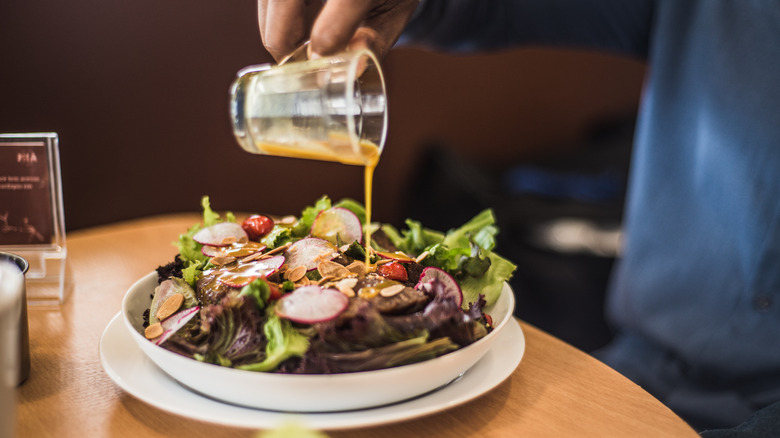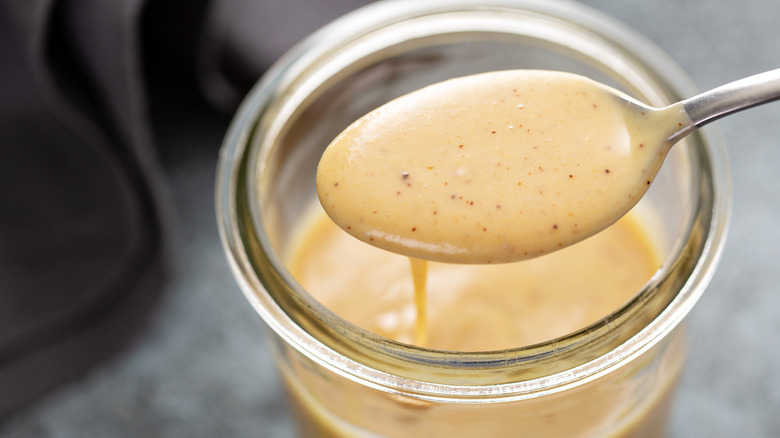The Right Way To Warm Salad Dressing
Looking to add more depth and personality to your salad? The trick might be switching from cold to warm dressing. Raising the temperature can enhance the flavor and texture of the vinaigrette, teasing out herbs or spices that would otherwise taste muted. The ingredients become more aromatic, adding punch to the leafy greens and earthy vegetables you plan to pour them over. Plus, warming salad dressing can also help ingredient combos like honey and cheese meld together better for a cohesive bite. But there's a proper way to do so that ensures the other ingredients don't get burned or coagulated; the trick is to heat your oil first and add the ingredients after.
The trick is to heat the oil in a skillet until it's warm, and then add your other ingredients. Whisk them together until combined, and immediately transfer them to the salad. Doing so ensures the herbs and spices open up but don't burn. If kept under a flame for too long, their essential oils and flavors can break down, resulting in a bitter or burnt taste. Of course, this also depends on the herbs or spices you're working with; while rosemary or thyme can last longer under prolonged heat, parsley or basil taste better when they're added at the very end.
However, if you're looking for a shortcut, you can also heat your dressing in the microwave. Just make sure to cook it in short bursts, stirring at intervals so you don't end up with hot spots.
What not to heat
While vinaigrettes and Italian dressings play well with a little heat, complex or creamy dressings should be avoided. They have the potential to curdle or separate, which can lead to a spoiled taste or an upset stomach after lunch. They can also become runny, which won't give you that rich texture you're used to with creamy dressings. For example, it's best not to heat avocado dressing since the avocados can turn brown and lose their texture. Also, dressings with many different ingredients, such as Thousand Island, can also be tricky to heat since ingredients such as mayonnaise, ketchup, and relish can taste off once warmed. A honey mustard dressing is also difficult to heat since the mustard can become bitter.
It is possible to warm ranch dressing, but it needs to be fresh and should be microwaved in 15-second intervals so it doesn't curdle. You should also use it immediately and toss any extra since warm ranch can encourage bacteria growth. Warming up dressing can add depth and heartiness to a salad — just make sure so advisedly!

